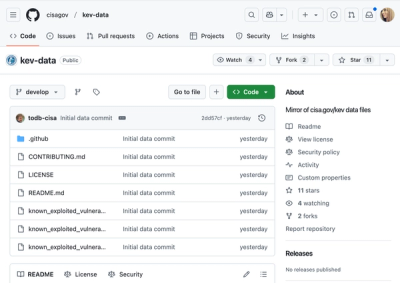
Security News
PyPI’s New Archival Feature Closes a Major Security Gap
PyPI now allows maintainers to archive projects, improving security and helping users make informed decisions about their dependencies.
eosconsequatur
Advanced tools
A simple, maximally extensible, dependency minimized framework for building modern Ethereum dApps
web3-react DocumentationGrab yourself a fresh copy of react@>=16.8
yarn add react@latest
And then install web3-react
yarn add @web3-react/core@latest
web3-react Contextinterface Web3ReactContextInterface<T = any> {
activate: (
connector: AbstractConnectorInterface,
onError?: (error: Error) => void,
throwErrors?: boolean
) => Promise<void>
setError: (error: Error) => void
deactivate: () => void
connector?: AbstractConnectorInterface
library?: T
chainId?: number
account?: null | string
active: boolean
error?: Error
}
web3-react@core API Referenceweb3-react relies on the existence of a Web3ReactProvider at the root of your dApp (or the subtree which you'd like to have web3 functionality).
getLibrary: (provider: any) => any
import { Web3ReactProvider } from '@web3-react/core'
// ...
function getLibrary(provider) {
return new Web3Provider(provider) // this will vary acccording to the web3 convenience library you use
}
function App () {
return (
<Web3ReactProvider getLibrary={getLibrary}>
{/* <...> */}
</Web3ReactProvider>
)
}
In some cases, a dApp may want to maintain >1 active web3 connections simultaneously. This could be for any number of reasons, including:
In cases like these, you'll likely want to create a second (or maybe even third third, but probably not fourth) root, which will function exactly like another Web3ReactProvider (in fact, Web3ReactProvider uses createWeb3ReactRoot under the hood).
key: string
import { Web3ReactProvider, createWeb3ReactRoot } from '@web3-react/core'
// ...
function getLibrary(provider) {
return new Web3Provider(provider) // this will vary acccording to the web3 convenience library used
}
const Web3ReactProviderReloaded = createWeb3ReactRoot('anotherOne')
function App () {
return (
<Web3ReactProvider getLibrary={getLibrary}>
<Web3ReactProviderReloaded getLibrary={getLibrary}>
{/* <...> */}
</Web3ReactProviderReloaded>
</Web3ReactProvider>
)
}
If you're using Hooks (😇), useWeb3React is your best friend. Call it from within any function component to access the web3-react Context. Just like that.
key?: string
import { useWeb3React } from '@web3-react/core'
function Component () {
const web3React = useWeb3React()
// ...
}
If you're not using Hooks (😳), getWeb3ReactContext is your savior. It will give you direct access to the context returned by createContext, which will unlock the use of contextType in class components, the Context.Consumer pattern, or whatever other render prop/HOC/etc. shenanigans your manager whose personal site still runs on PHP is making you write.
key?: string
import { getWeb3ReactContext } from '@web3-react/core'
const web3ReactContext = getWeb3ReactContext()
This is an error which can be used to inform users that they're connected to an unsupported network.
import { UnsupportedChainIdError } from '@web3-react/core'
// ...
function Component () {
const { error } = useWeb3React()
const isUnsupportedChainIdError = error instanceof UnsupportedChainIdError
// ...
}
FAQs
A simple, maximally extensible, dependency minimized framework for building modern Ethereum dApps
We found that eosconsequatur demonstrated a healthy version release cadence and project activity because the last version was released less than a year ago. It has 1 open source maintainer collaborating on the project.
Did you know?

Socket for GitHub automatically highlights issues in each pull request and monitors the health of all your open source dependencies. Discover the contents of your packages and block harmful activity before you install or update your dependencies.

Security News
PyPI now allows maintainers to archive projects, improving security and helping users make informed decisions about their dependencies.

Research
Security News
Malicious npm package postcss-optimizer delivers BeaverTail malware, targeting developer systems; similarities to past campaigns suggest a North Korean connection.

Security News
CISA's KEV data is now on GitHub, offering easier access, API integration, commit history tracking, and automated updates for security teams and researchers.